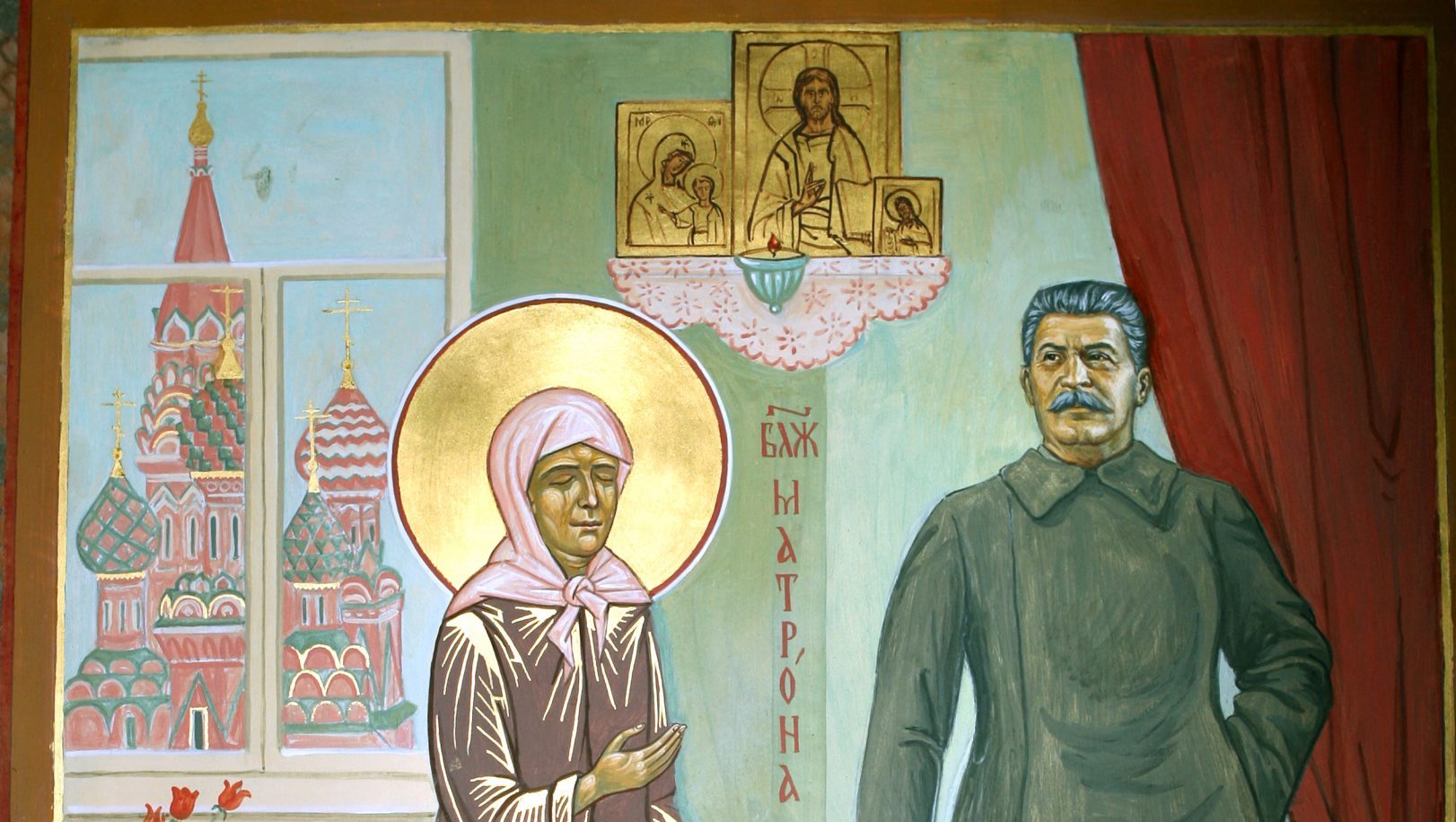No other icon in the Sameba Cathedral in Tbilisi has as much resonance for Georgians as the image of St Matrona of Moscow. That’s mainly because of the figure who is depicted beside her – Joseph Stalin. This unusual recent gift to the cathedral went viral after Christmas, which in the Orthodox Church fell this year on January 7.
Many people found it offensive, but others supported the idea of having Stalin – a Georgian – on the icon. It was a remarkable division of opinion. It also revealed perfectly the current polarisation of Georgian society, both political and cultural.
It didn’t surprise me to learn that Stalin still has supporters in Georgia. In 2012, I covered a story in the village of Zemo Alvani, where the inhabitants had clubbed together to restore Stalin’s monument. This came after the government of the time had lifted the ban on the public display of Soviet symbols. Some people here still feel an affinity for the brutal old Soviet dictator.
So when an activist named Nata Peradze went to the cathedral and threw blue paint on the icon, there was uproar among far-right conservative groups. A crowd gathered outside her Tbilisi apartment, some carrying crosses, demanding Peradze answer for her actions. The police were called to protect her apartment. The majority of Georgians are Orthodox Christians, which perhaps explains the sharp reaction to the desecration of an object of veneration.
Davit Tarkhan-Mouravi is the leader of a political party known as the Alliance of Patriots and was also the one who donated the icon to the cathedral. The Alliance of Patriots is a pro-Russian group, and although Georgia has no diplomatic relations with Russia, the party’s leaders are regulars in Moscow.
Tarkhan-Mouravi justified his gift by referring to the story of the meeting between Stalin and St Matrona, during which Stalin was told that he would defeat fascism. Not surprisingly, the patriarchy of Georgia doesn’t share this version of events.
The irony of all this is that Stalin, although religious as a younger man, fought viciously to suppress organised religion when he came to power, particularly in Georgia. Priests were either deported or executed. According to Georgian researchers, during 1923 alone Stalin arranged the demolition of 1,212 churches and monasteries in Georgia. Between 1921 and 1953, around 1,305 religious buildings were shut down or redesignated for other purposes.
But when you consider the political alignment between the Georgian and Russian Orthodox Churches, the presence of Stalin’s image in Tbilisi’s main cathedral is not so surprising – at least, not to me. It sums up the institution pretty well.
But the Georgian church is not under the Moscow Patriarchate, although its views are often close to those of the Kremlin. That is especially the case when it comes to cultural questions on sexuality and the moral failings of liberal society.
The Georgian Orthodox Church issued a statement saying that there would be changes to the icon. “Since there is not enough evidence about the meeting between St Matrona and J Stalin in the Canonic text, it is not accepted by the Russian church, which made her a saint. It is necessary… to take into consideration other details in relation to iconography,” the statement read.
Though it could seem that the Patriarchy of Georgia was trying to calm the situation, it was instructive to see that the justification for the removal of Stalin was based on the fact that St Matrona never met him, and nothing more. It’s also notable that the statement contains no criticism of Stalin himself. Even so, many supporters of ultra-rightist groups have criticised the church for its decision, demanding that the icon remain the way it is. One of these conservatives, Nikoloz Mzhavanadze, called a protest “for those to whom this country matters”.
So far people have protested against what they see as damage to a holy icon. But if people come out to demonstrate specifically in favour of Stalin’s presence on the icon, that will be a whole other story.



